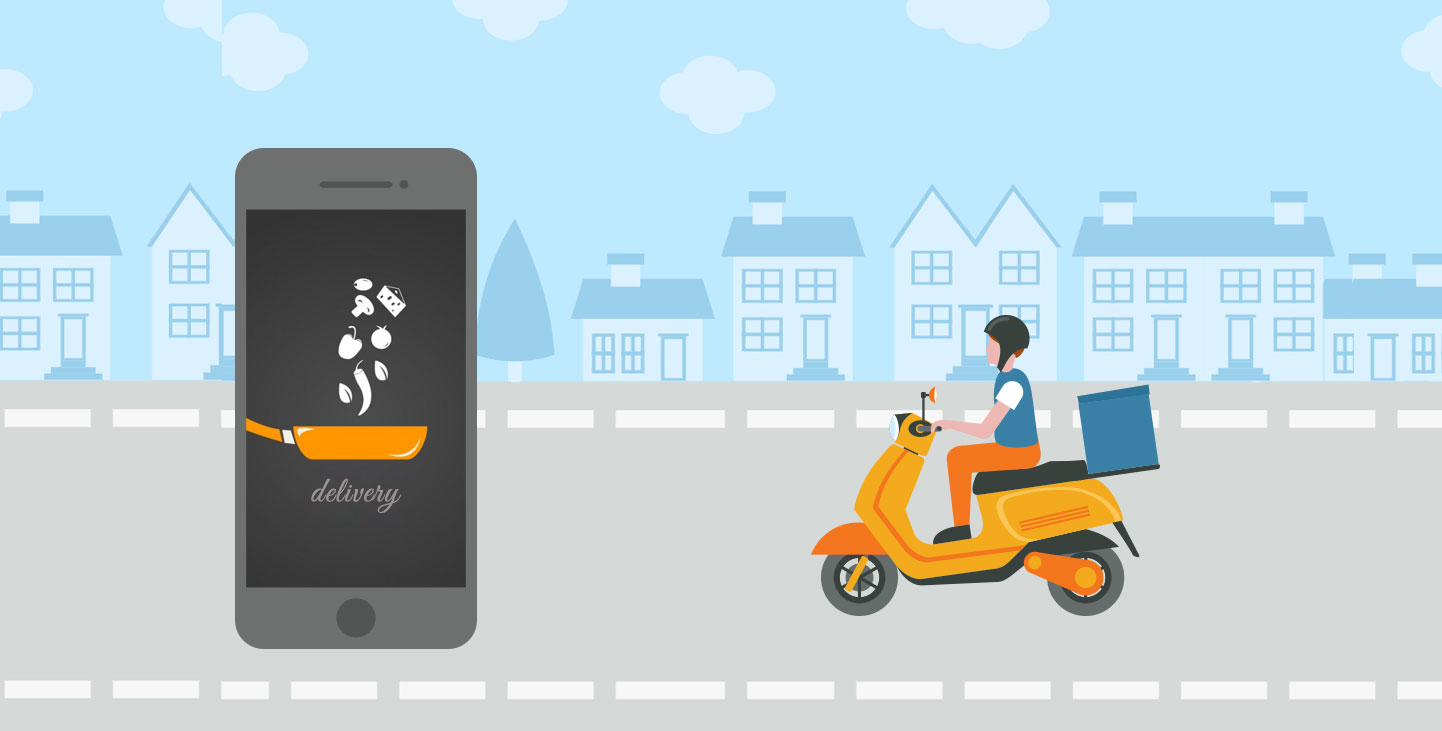Introduction
The food delivery industry in the UK has seen remarkable growth over the past decade, revolutionizing the way people access their favorite meals. With the advent of food delivery apps, the convenience of ordering food from the comfort of one’s home has become a staple in urban and rural areas alike. This article delves into the leading food delivery app developers in the UK, examining their features, benefits, challenges, and future prospects.
Key Players in the UK Food Delivery App Market
Deliveroo
History and Background
Deliveroo, founded in 2013 by Will Shu and Greg Orlowski, has rapidly ascended to become one of the leading food delivery services in the UK. Initially launched in London, Deliveroo has expanded its services across multiple countries, delivering food from local restaurants and chains directly to customers’ doors.
Key Features and Services
Deliveroo’s platform boasts a user-friendly interface, allowing customers to browse a wide range of restaurants, cuisines, and dietary options. Key features include real-time order tracking, scheduled deliveries, and various payment methods. The company’s subscription service, Deliveroo Plus, offers customers free delivery on orders for a monthly fee, enhancing customer loyalty and retention.
Market Position and Growth
Deliveroo has established a significant presence in the UK market, competing fiercely with other major players. The company’s innovative approach, including partnerships with grocery stores and the introduction of “dark kitchens” (delivery-only kitchens), has contributed to its robust growth and market share.
Just Eat
History and Background
Just Eat, founded in Denmark in 2001, entered the UK market in 2006 and has since become a household name. The company focuses on connecting customers with local takeaway restaurants, providing a platform that simplifies the ordering process for both parties.
Key Features and Services
Just Eat offers a vast selection of restaurants and cuisines, catering to diverse tastes and preferences. The platform includes features such as user reviews, order tracking, and multiple payment options. Just Eat’s recent integration with delivery services has expanded its capabilities, providing customers with a seamless food delivery experience.
Market Position and Growth
Just Eat has consistently maintained a strong market position in the UK, leveraging its extensive network of restaurant partners. The company’s merger with Takeaway.com in 2020 further solidified its dominance, enabling it to compete effectively with other major players like Deliveroo and Uber Eats.
Uber Eats
History and Background
Uber Eats, launched in 2014 as a subsidiary of Uber, quickly became a formidable competitor in the food delivery market. Leveraging Uber’s existing infrastructure and technology, Uber Eats provides a reliable and efficient food delivery service.
Key Features and Services
Uber Eats offers a sleek, intuitive app that allows customers to order from a wide range of restaurants. Features such as real-time tracking, customized recommendations, and contactless delivery options enhance the user experience. Uber Eats also integrates seamlessly with Uber’s ride-hailing service, offering additional convenience for users.
Market Position and Growth
Uber Eats has rapidly gained market share in the UK, capitalizing on its strong brand and technological prowess. The company’s strategic partnerships with major restaurant chains and focus on quick delivery times have contributed to its growing popularity.
Other Notable Apps
Hungryhouse
Acquired by Just Eat in 2018, Hungryhouse was known for its extensive network of independent restaurants, offering a diverse range of cuisines.
Foodhub
Foodhub differentiates itself by not charging restaurants commission fees, making it an attractive option for both eateries and customers looking for competitive prices.
Gousto and Mindful Chef
These meal kit delivery services offer a unique twist on food delivery, providing customers with ingredients and recipes to cook gourmet meals at home. Gousto focuses on convenience and variety, while Mindful Chef emphasizes healthy, nutritious options.
Technical Specifications
Platform Compatibility
iOS
Most leading food delivery apps are available on iOS, ensuring compatibility with iPhones and iPads. Regular updates and optimizations are made to enhance performance and user experience.
Android
Android users can access food delivery apps through the Google Play Store, with similar features and functionalities as their iOS counterparts. Cross-platform compatibility ensures a broad user base.
Web Applications
For users who prefer ordering via desktop or laptop, web applications provide a seamless experience. Features such as account synchronization across devices and web-exclusive offers are common.
Integration with Restaurants
API Integration
Food delivery apps utilize API integration to connect seamlessly with restaurant POS systems, ensuring accurate order processing and real-time updates.
POS System Compatibility
Compatibility with various POS systems allows for smooth operations, reducing errors and enhancing efficiency in order handling and delivery.
User Interface and Experience
App Design
A clean, intuitive app design is crucial for user engagement. Leading food delivery apps prioritize easy navigation, quick access to menus, and simple checkout processes.
User-Friendly Features
Features such as personalized recommendations, search filters, and easy reordering options contribute to a positive user experience, encouraging repeat use.
Security Measures
Data Encryption
To protect user data, food delivery apps employ robust encryption techniques, ensuring that sensitive information is secure during transmission and storage.
Payment Security
Secure payment gateways and multiple payment options, including credit cards, PayPal, and digital wallets, provide customers with peace of mind.
User Data Privacy
Compliance with data protection regulations, such as GDPR, ensures that user information is handled responsibly, with transparent privacy policies in place.
Applications and Use Cases
Urban Areas
High Population Density
In densely populated urban areas, food delivery apps provide a convenient solution for residents looking to save time and avoid crowded restaurants.
Fast-Paced Lifestyle
The fast-paced lifestyle in cities makes food delivery services an essential part of daily life, catering to busy professionals and families alike.
Rural Areas
Limited Restaurant Options
In rural areas, where dining options may be limited, food delivery apps expand access to a variety of cuisines, enhancing the culinary landscape.
Expansion Strategies
Companies are increasingly focusing on expanding their delivery networks to cover rural regions, addressing the growing demand for convenient food delivery options.
Special Events and Occasions
Parties and Gatherings
Food delivery apps are popular for catering parties and gatherings, offering diverse menus that cater to large groups with varying preferences.
Corporate Events
For corporate events, food delivery services provide an efficient solution for catering, ensuring timely delivery and a wide range of meal options.
Benefits of Food Delivery Apps
Convenience for Customers
Food delivery apps offer unparalleled convenience, allowing customers to order their favorite meals with just a few taps on their smartphones.
Increased Sales for Restaurants
By partnering with food delivery platforms, restaurants can reach a broader audience, boosting their sales and visibility.
Job Creation for Delivery Drivers
The rise of food delivery services has created numerous job opportunities for delivery drivers, contributing to the gig economy.
Adaptability to Dietary Preferences and Restrictions
Food delivery apps cater to various dietary needs, offering options for vegetarians, vegans, and individuals with specific food allergies or preferences.
Challenges and Limitations
High Competition
The food delivery market is highly competitive, with numerous players vying for market share, leading to aggressive pricing strategies and marketing campaigns.
Delivery Logistics
Efficient delivery logistics are crucial for timely service, but challenges such as traffic, weather conditions, and driver availability can impact delivery times.
Commission Fees for Restaurants
High commission fees charged by some food delivery apps can be a burden for restaurants, affecting their profitability and pricing strategies.
Regulatory and Compliance Issues
Compliance with local regulations, such as health and safety standards and labor laws, is essential for food delivery companies, posing an ongoing challenge.
Latest Innovations
AI and Machine Learning
AI and machine learning technologies are being used to optimize delivery routes, predict customer preferences, and enhance overall service efficiency.
Drone Deliveries
Drone deliveries are an emerging trend, promising faster and more efficient delivery options, particularly in congested urban areas.
Contactless Delivery Options
In response to the COVID-19 pandemic, contactless delivery options have been introduced, prioritizing the safety of customers and delivery personnel.
Sustainable Packaging Initiatives
To address environmental concerns, many food delivery companies are adopting sustainable packaging solutions, reducing plastic waste and promoting eco-friendly practices.
Future Prospects
Market Growth Predictions
The food delivery market is expected to continue its growth trajectory, driven by increasing consumer demand and technological advancements.
Technological Advancements
Future technological innovations, such as autonomous delivery vehicles and enhanced AI capabilities, will further revolutionize the food delivery industry.
Expansion into New Regions
As food delivery services expand into new regions, they will cater to a broader audience, including underserved rural areas and international markets.
Potential Mergers and Acquisitions
The industry may witness further consolidation through mergers and acquisitions, as companies seek to strengthen their market position and expand their service offerings.
Comparative Analysis
Deliveroo vs. Just Eat
A comparison of Deliveroo and Just Eat reveals differences in their business models, market strategies, and customer experiences, with each offering unique advantages.
Uber Eats vs. Foodhub
Uber Eats and Foodhub cater to different market segments, with Uber Eats focusing on rapid delivery and premium services, while Foodhub emphasizes cost-effectiveness for restaurants.
Impact of Smaller Players
Smaller players in the market, such as Gousto and Mindful Chef, offer niche services that cater to specific customer needs, contributing to the diversity of the food delivery landscape.
User Guides or Tutorials
How to Use Deliveroo
A step-by-step guide to using Deliveroo, including account setup, browsing menus, placing orders, and tracking deliveries.
How to Use Just Eat
Detailed instructions on how to navigate the Just Eat platform, find the best restaurants, and take advantage of special offers.
How to Use Uber Eats
A comprehensive tutorial on using Uber Eats, from signing up to ordering food and utilizing the app’s advanced features.
Tips for Maximizing Discounts and Offers
Strategies for finding and using discounts and promotional offers on food delivery apps, helping customers save money on their orders.
Conclusion
The food delivery app development company in UK is dynamic and rapidly evolving, offering immense convenience and variety to consumers while providing significant opportunities for restaurants and delivery personnel. As technology continues to advance, the future of food delivery promises even greater innovations and growth.
FAQ Section
What is the best food delivery app in the UK?
The best food delivery app depends on individual preferences and needs. Deliveroo, Just Eat, and Uber Eats are among the top choices, each offering unique features and services.
How do food delivery apps work?
Food delivery apps connect customers with local restaurants, allowing them to browse menus, place orders, and track deliveries through a user-friendly interface.
Are food delivery apps safe?
Yes, food delivery apps employ robust security measures, including data encryption and secure payment gateways, to ensure the safety and privacy of users.
How can restaurants partner with delivery apps?
Restaurants can partner with delivery apps by signing up on the app’s platform, integrating their menus, and ensuring they meet the app’s quality and compliance standards.





